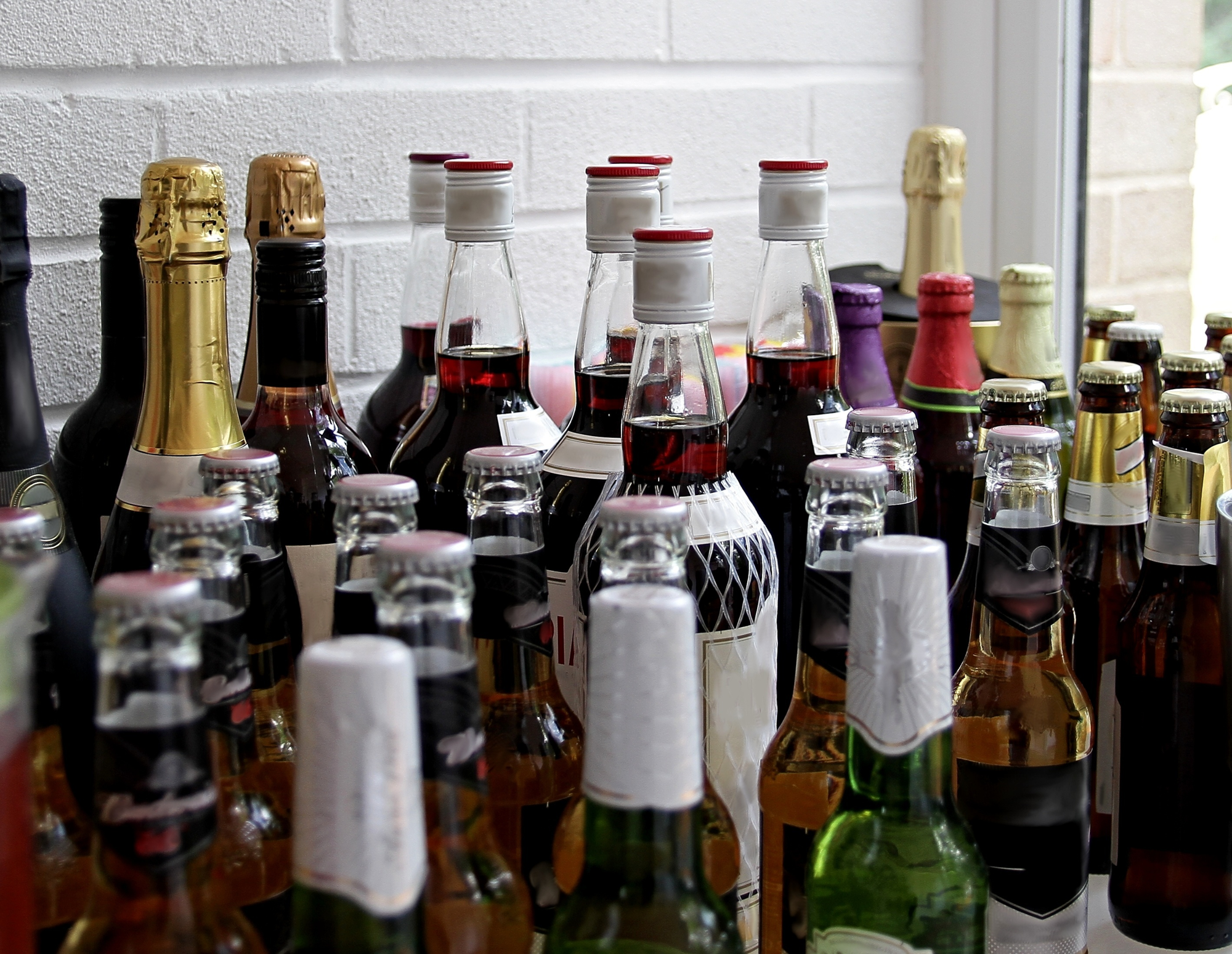On a bustling Friday night, a busy bar is not unlike a big show. Bartenders are the headliners. The bar manager is the director. Guests are the audience. In every great show, there's the stage technician, who makes sure the actors have their props and the curtains don't fall. In every great bar, there's the barback.
"The barback creates the foundation," says veteran bartender Greg Svitenko, "All the grunt work--checking beer kegs, making simple syrup, picking mint leaves--all that stuff happens behind the scenes."
Just like the best offense is a good defense, a tidy and well-stocked bar station is the best way to ensure a busy night runs smoothly. Barbacks might not be making drinks and schmoozing guests, but they're crucial to the guest experience by helping make sure drinks are served quickly and the bar area is clean and organized. It may not be the glamorous work of a bartending job, but without barbacks, there would be a lot more broken glass and dirty dishes in the world.
What are common barback duties?
Barbacks enable bartenders to serve more drinks by handling the more time-consuming or arduous tasks. Barbacks are common across the bar industry, but they're particularly essential in high-traffic environments where bartenders might not be able to leave their well because they have drinks to make and guests to serve.
Barback responsibilities can be divided into three categories: pre-shift preparation, bartender support, and closing.

Pre-shift preparation
The barback's night begins well before the bar opens. In terms of pre-shift duties and responsibilities, barbacks prepare garnishes, restock glasses, and get the bar stocked. If the bar serves elaborate cocktails with long ingredient lists, replenishing garnishes will be a significant task. But if a bar sells predominantly well drinks, this could be a simple task. The best barbacks slice fruit, wash and pick herbs, and prepare simple syrups with close attention to detail. After all, a cocktail is a sum of different parts and nobody wants to find rotten mint or an errant lemon seed.
Alongside garnish prep, the barback is tasked with restocking bottles, kegs, plus any paper goods like napkins, straws, and drink stirrers. The more crowded it gets, the more difficult it gets to weave in between bartenders behind the bar.
If the closing barback and cleaning team did their jobs correctly, the pre-shift bar should be pretty clean. But it's a good idea for the barback to do a quick sweep to wipe down any sticky spots and confirm the floor is clear. Depending on the bar's staffing, it might be in the barback's job description to clean and re-stock bathrooms to ensure the space is ready for guests.
Bartender support
During service, the barback's main role is to support bartenders. A typical barback job description includes cleaning spills, clearing broken glasses, and refilling ice bins and liquor bottles. It might be necessary to clean and re-stock glasses mid-shift to keep everything running smoothly.
The barback position is the right hand to the bartender role. A good barback is observant, noticing everything from the night's most popular liquor and beer to which bartender seems overwhelmed and could use an extra set of hands.
Often, the barback might be asked to jump in on other bar tasks: checking IDs to ensure guests are of legal drinking age, cleaning and restocking the bathrooms, doing a sweep of the bar to ensure the patrons are safe and no one is getting out of control. It might not be in the original job description, but when the bar manager calls, the barback must answer.
Closing
After a busy shift, sticking around the bar and cleaning up after patrons doesn't seem appealing. But just as no bartending shift is complete until the last guest has finished their final drink, the barback's work requires post-service clean up. This means cleaning dirty glasses (making sure every rim is void of lipstick is easier than it sounds), wiping the service area down, and doing one last sweep for drink spills.
Barbacking is a physically demanding job. Kegs won't move themselves, and it's a lot of time spent on your feet. But closing duties and responsibilities are the homestretch and the last stop before the barback tip share. Time to power through.

How do the barback's job and the bartender's job differ?
At some bars, a barback can't serve alcohol, differentiating the barback job description from the bartender position. Still, you might see a minimum age in the job description, just in case. At others, they may serve as a bartender's apprentice, mixing drinks when the bar is slammed. No matter the specifics of the barback duties, a barback's main role behind the bar is support, whereas the bartender is focused on the guest experience and making drinks.
What makes a great barback?
A great barback intuits when they need to jump in to assist bartenders with drink orders without waiting to be told—all without getting in the way behind the bar. Here are some qualities that make a great barback.
Anticipate needs
A good barback knows what bartenders need before being asked. They have a sixth sense behind the bar and an uncanny ability to locate empty glasses and liquor bottles, ready to restock at a moment's notice. They know everything that is going on in the bar and are prepared for when things go wrong, though they know how to stop chaos in its tracks.
Handle stress
Like every hospitality job, barback duties require hard and soft skills. One of the key soft skills for any barback is the ability to handle stress. The barback has a lot of people to please, often receiving demands from the bar manager, thirsty patrons, and the bartenders. The ability is cope with stressful situations might not be in the barback job description, but it's a key part of the job nonetheless.
Work with bartenders—not against them
Bar work is many things: rewarding, fun, and often profitable. But there can also be a lot of ego behind the bar. Some bars can be hierarchal places, with the lead bartender calling the shots and everyone else following marching orders. But a good bar manager knows a bartending shift is all about symbiosis and creates an environment in which the team works together. For the barback, that means giving bartenders the right of way.
See the whole picture
To the untrained eye, the barbacks clean glasses, the bartenders serve alcohol, the bar fills up, and everyone leaves happy. But nothing is that simple. Anyone in the barback job must see the whole picture to be an effective member of the bar staff.
It's not about scrubbing the lipstick off of a coupe glass or replenishing the ice. It's about creating an excellent experience for the guests and helping bartenders serve more guests in a way that benefits everyone's bottom line. Understanding how the different moving parts of the bar work together should be a top priority for all new barbacks.
Attention to detail
Sometimes, it's the simplest tasks that require the most careful eye. For a barback, this means knife safety when slicing garnishes, the ability to keep the bar meticulously clean, and making sure glassware is crystal clean. It's an essential skill for the barback looking to become a bartender and helps barbacks fare well in any hospitality job (and beyond).

What is the average salary for a barback?
A barback's salary depends on a few factors. This includes the minimum wage laws of the city or state where the bar is located, the responsibilities required by the barback job description, and the tipping structure. A new barback can expect to be paid minimum wage for their role. The barback salary is often part of the job description on job boards but might differ based on experience and the salary of other bar staff members.
Many barback skills are gained through on-the-job learning, which means a new barback is unlikely to require much training or certification but will benefit from experience. A barback can gain the basic knowledge required to do their job quickly over a slow shift or two.
Different bars implement different tip share policies, which impact how much a barback makes. Often, the percentage of the bartender's tips. Most bartenders will tip out a percentage of their share to the barback, especially after a particularly profitable night. This can range from 10-30%.

3 Tips from a veteran barback
Greg Svitenko has over 25 years of experience in the restaurant industry, having worked his way up from barback to mixologist to Assistant GM and GM at multiple restaurant concepts. He was the creator of several cocktail programs and was selected as one of the "Top 25 Bartenders in the US" by Ketel One, among other awards. He also owned his own restaurant for two years. Here are some of Greg's top tips for barback excellence.
1. If you want to be the best bartender, be the best barback
For many, a great barback job description is the potential to become a bartender. Many bars promote barbacks to bartenders, giving them the ability to make drinks, serve alcohol, and (most importantly) make more money.
The barback role is a great entry point into hospitality and bar work. It's tough work, but when the bar is bustling the shift goes by quickly. Still, the job is best fit for a young person who can work late hours and aspires to the bartender role. When a barback becomes a bartender, they bring with them recognition of the barback's hard work and know how to work with the next barback.
2. Practice handling money or using the POS system
While many bars these days take payments predominately through their bar POS system, knowing how to quickly take payments—in whatever form they come in—is a key part of the job. When I was a barback 20 years ago, that meant learning how to handle cash quickly and safely.
For the current barback, it's a good idea to learn how the POS system works before even becoming a bartender. Knowing how to input orders, modify drinks, and put in comps and voids will make your first shift as a bartender much smoother.
3. Learn how to make drinks
Nobody has a better view of what goes on behind the bar than the barback. They can see how bartenders save time and work efficiently, keep an eye on guests, and keep the other eye on liquor levels. This knowledge can fast-track a barback to become a bartender.
A barback can work closely with the bartenders to learn how to make signature drinks and practice pours. If the bar is crowded, it can be difficult to find time to get your drink-making reps in, but see if it's possible to practice a few simple drinks before and after service.
Three cheers for the barback
While the bartender often gets showered with praise (and tips), the barback plays a supporting role that rarely gets recognition. But a world without the barback is one in which glasses are smudged, tequila bottles go empty, lemons go unsliced, and guests wait longer for their drinks. Next time you visit your local bar, thank a barback.











